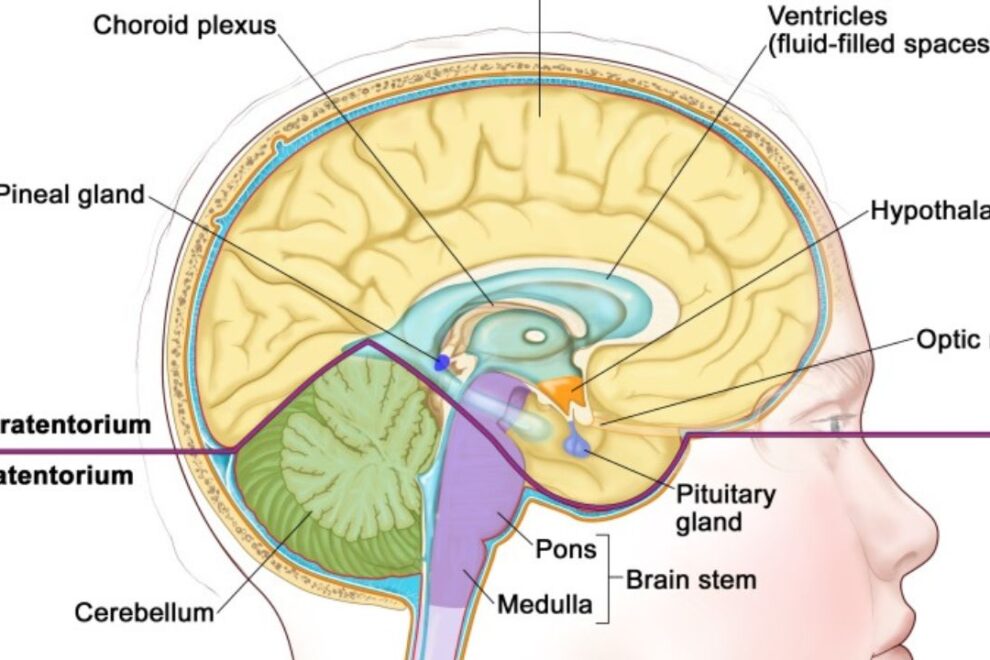Pineal Region Tumors in India: Symptoms, Diagnosis, and Treatment Options
The pineal gland develops during the second month of gestation as a diverticulum in the diencephalic roof of the third ventricle. It is flanked by the posterior and habenular commissures in the rostral portion of the midbrain directly below the splenium of the corpus callosum. The velum interpositum is found rostral and dorsal to the pineal gland and contains the internal cerebral veins, which join to form the vein of Galen.


Free Doctor Opinion
Pineal region tumors are derived from cells located in and around the pineal gland. The principle cell of the pineal gland is the pineal parenchymal cell or pinocyte. This cell is a specialized neuron related to retinal rods and cones. The pinocyte is surrounded by a stroma of fibrillary astrocytes, which interact with adjoining blood vessels to form part of the blood-pial barrier.
The pineal gland is richly innervated with sympathetic noradrenergic input from a pathway that originates in the retina and courses through the suprachiasmatic nucleus of the hypothalamus and the superior cervical ganglion. Upon stimulation, the pineal gland converts the sympathetic input into hormonal output by producing melatonin, which has regulatory effects upon hormones such as luteinizing hormone and follicle-stimulating hormone.
Symptoms Surgery in india
Regardless of the type of tumor involved, tumors in the pineal region usually cause symptoms through one of three mechanisms. They can increase pressure in the skull by blocking the flow of cerebrospinal fluid (hydrocephalus), they can compress part of the brain, or they can cause disruptions in the endocrine system, the system that controls hormones and includes the pineal gland. Hydrocephalus is a common result of tumors in this region, and will lead first to headaches, and then perhaps to nausea, vomiting, and altered mental status. The brainstem and the cerebellum are the most common sites of compression from a pineal region tumor; compression in these regions can cause abnormal eye movements (including Parinaud’s syndrome, the inability to look up), double vision, uncoordinated body movements, or unsteady gait. Endocrine dysfunction is less common and usually is caused when the tumor involves the hypothalamus, a nearby brain region that is involved in growth and metabolism.
Do you have your medical reports; send us now for a free quote Or email at [email protected] / Call +91 9029304141
Diagnosis Surgery in India
As with other brain tumors, imaging studies are the key component in the diagnosis of pineal region masses. Magnetic resonance imaging (MRI) scans primarily are used. They can show the size and characteristics of the tumor, and can indicate the presence of hydrocephalus. Computed tomography (CT) scans, which can help detect the presence of calcification or hardening in the tumor, also are used. For either study, an agent that provides contrast in the image is administered intravenously so neurosurgeons can visualize the tumor against the normal brain in the background.
Unlike germ cell tumors, which arise in the pineal region despite being unrelated to the pineal gland itself, pineal cells tumors arise directly from the functional cells of the gland, called pineal parenchymal cells. These cells are unrelated to the neurons and glial cells (supporting cells) in the brain. However, there are glial cells present in the gland, and these cells may give rise to tumors called gliomas.
The pineal gland is also filled with brain support cells (astrocytes) and has a very dense input of nerve fibres coming from the eyes via a very circuitous and complicated route. Thus, the tumors of the astrocyte support cells of the pineal region are the same as the astrocytomas and GBM.
Pineal tumors, themselves, vary. They include : –
- Pinealocytoma (“benign” pineal cell tumor)
- Pineoblastoma (more aggressive pineal cell tumor)
- Pineal germinoma ( aggressive primitive cell tumor growing in the pineal region)
- Pineal teratomas (rare tumors of multiple cell types that grow in the pineal region)
- Pineal Cysts (most often not treated, unless large enough to cause hydrocephalus or visual symptoms)
Want to know about the Treatment hospitals in India? Take a free second opinion Or email at [email protected] / Call +91 902930414
Read Also :-
- Stenting for GI Tract Surgery: A Minimally Invasive Solution in Digestive Health
- Surrogacy Agency in India: Professional Guidance for Your Parenthood Journey
- Sigmoidoscopy Surgery in India: Early Detection and Affordable Care for Colon Health
- Advanced Spondylosis Surgery in India: Procedures, Costs & Leading Hospitals
- Stenting for GI Tract Surgery: A Minimally Invasive Solution in Digestive Health
- Sigmoid Colectomy in India: Advanced and Affordable Colon Surgery
Committed To Build Positive, Safe, Patient Focused Care.
High Quality
Care
Home Review
Medicine
All Advanced
Equipment
Book An Appointment

At We Care India, we offer complete medical services for your entire family, from routine check-ups to injury care, ensuring personalized attention and expert assistance for all your health needs.


